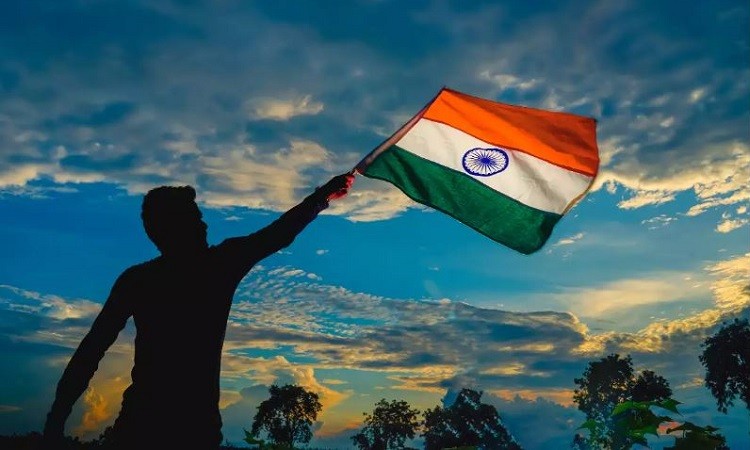
Independence Day 2023: The tricolor flag of India, adorned with saffron, white, and green stripes along with the Ashoka Chakra, is an emblematic representation of the country's historic struggle for independence and a powerful symbol of unity, diversity, and progress. This flag, often referred to as the "Tiranga," holds a deep historical significance and plays a pivotal role in the celebration of India's Independence Day.
Origins of the Tricolor: The concept of the tricolor flag can be traced back to the late 19th century when various freedom fighters and visionaries sought a unifying emblem that would encapsulate the aspirations and diversity of India's populace under British colonial rule. One of the earliest mentions of the tricolor flag is found in the journals of Sister Nivedita, an Irish disciple of Swami Vivekananda, who mentioned the idea of a saffron, white, and green flag in 1904.
The tricolor flag, as we recognize it today, was designed by Pingali Venkayya, an Indian freedom fighter and scholar, in 1921. The saffron color represents courage and sacrifice, the white stands for purity and truth, and the green symbolizes growth and auspiciousness. The spinning wheel at the center of the white stripe signifies economic progress and self-sufficiency. In 1947, the Ashoka Chakra, a 24-spoke wheel derived from the Lion Capital of Ashoka, was added to the flag to represent the eternal cycle of righteousness.
The Role of the Tricolor in the Independence Movement: Throughout India's struggle for independence, the tricolor flag served as a rallying point for millions of Indians who were united in their pursuit of freedom. It became a potent symbol that embodied the collective aspirations of a nation yearning to break free from colonial rule. The flag was prominently displayed during protests, demonstrations, and public gatherings, signifying resistance and a shared commitment to the cause of independence.
Perhaps one of the most iconic moments in India's history involving the tricolor flag was the Salt March led by Mahatma Gandhi in 1930. As Gandhi embarked on a 240-mile march to the Arabian Sea to protest the British salt tax, he carried the tricolor flag as a symbol of nonviolent resistance and unity among Indians.
Independence Day and the Tricolor: India's Independence Day, observed on the 15th of August every year, is a momentous occasion for the nation. It commemorates the day in 1947 when India finally gained freedom from British colonial rule after years of relentless struggle. The tricolor flag takes center stage during the celebrations, unfurled in grand ceremonies across the country. The Prime Minister of India hoists the flag at the Red Fort in Delhi, followed by patriotic speeches and cultural performances.
The unfurling of the tricolor is more than just a ceremonial gesture; it embodies the spirit of freedom and the sacrifices made by countless individuals who fought for the nation's independence. The sight of the flag fluttering in the wind evokes a sense of pride, unity, and hope for a better future.
Continued Significance: Even after India achieved independence, the tricolor flag continues to hold immense significance. It represents the democratic principles upon which the nation was built and serves as a reminder of the values that India aspires to uphold. The tricolor is a beacon of inclusivity, diversity, and unity in a country that is home to various cultures, languages, and traditions.
As India progresses on its journey of growth and development, the tricolor flag remains a poignant reminder of the sacrifices made by the freedom fighters and the responsibility of every citizen to uphold the ideals of justice, equality, and liberty.
The tricolor flag of India is not merely a piece of cloth; it is a symbol of the indomitable spirit of a nation that overcame colonial rule through unwavering determination and sacrifice. From its origins as a unifying emblem during the struggle for independence to its prominent presence in the celebrations of Independence Day, the tricolor flag stands as a testament to the resilience and unity of the Indian people. It is a symbol that will forever remind India of its journey towards freedom and the responsibilities that come with it.